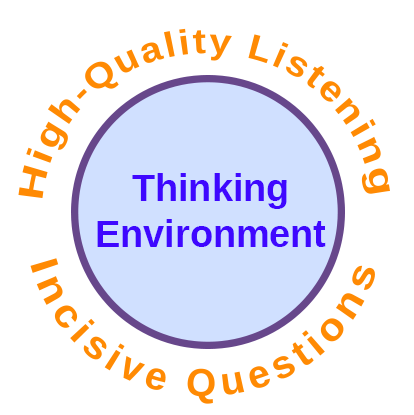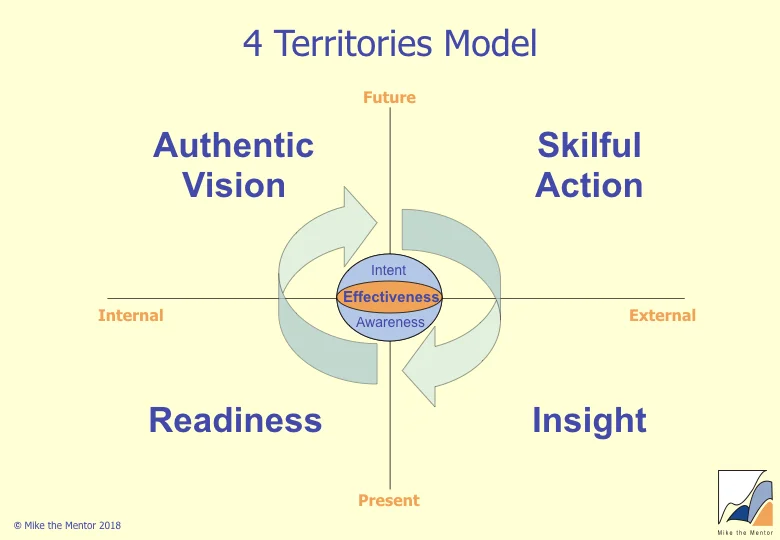Thinking Environments
/As children, few of us are taught directly the core skills we need to lead fulfilling lives – skills like listening well, relating effectively, dealing with conflict, etc. Instead we’re expected to somehow pick them up as we go along.
Thinking is a good example. We like to think (!) that most of our thinking is novel and creative – but the reality is that it mostly consists of habitual thoughts, ideas and responses we keep churning out day after day.
This is useful when dealing with familiar situations where we already know the most effective approach – but in a time of rapid change when our habitual thinking is becoming part of the problem and when the business and wider environment is calling on new thinking, it is positively dangerous.
Nancy Kline in her book Time to Think suggests that we can help others think better by creating a Thinking Environment. Her approach has two underlying principles:
attentive and respectful listening encourages people to think for themselves
when a person’s thinking becomes blocked, they are usually making an assumption which they treat as the truth and which is preventing progress – and it can be removed by asking Incisive Questions.
To create a Thinking Environment, ask the following questions:
“What do you want to think about?” … “Is there anything more (you think or feel or want to say about this)?” - repeated until the thinker says “no”. Apart from this just listen.
“What more do you want the rest of the session to achieve? “ - establish an outcome for the session.
Help them find their limiting assumption. Using the exact words the thinker answered Q2 with, ask “What might you be assuming that is stopping you achieve your session goal?" (eg, If the answer to Q2 was “to improve my time management” then the question here would be “What might you be assuming that is stopping you improving your time management?”). Listen and then ask “what else?” Repeat until they have no more assumptions. Then ask them to choose the one that is most in their way (eg, “I must do excellent work”). Then find the freeing assumption by asking “What is your positive opposite of that assumption?" (eg, “Its OK to do good-enough work”).
Now ask the Incisive Question – the question that removes the thinker’s limiting assumption and reveals the ideas on the other side. “If you knew ... freeing assumption ... goal?” (eg “If you knew that it was OK to do good-enough work, how would you improve your time management?”). Repeat the Incisive Question and let fresh ideas flow.
Thinking Environments are an effective way of improving thinking. The approach has similarities with Competing Commitments. Kline believes Thinking Environments could change the world. If we can think together better, perhaps we can live together better.


